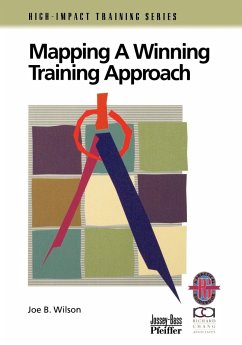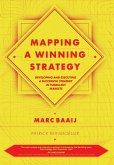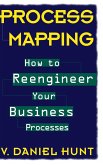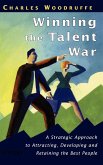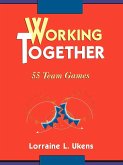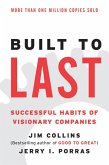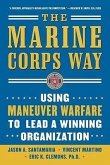Joe B Wilson
Mapping a Winning Training Approach
Joe B Wilson
Mapping a Winning Training Approach
- Broschiertes Buch
- Merkliste
- Auf die Merkliste
- Bewerten Bewerten
- Teilen
- Produkt teilen
- Produkterinnerung
- Produkterinnerung
Learn how to turn a set of needs and objectives into powerful training results by linking outcome measure to organizational goals and designing and evaluating appropriate training strategies.
Andere Kunden interessierten sich auch für
![Mapping a Winning Strategy Mapping a Winning Strategy]() Marc BaaijMapping a Winning Strategy49,99 €
Marc BaaijMapping a Winning Strategy49,99 €![Process Mapping Process Mapping]() V Daniel HuntProcess Mapping42,99 €
V Daniel HuntProcess Mapping42,99 €![Winning the Talent War Winning the Talent War]() Charles WoodruffeWinning the Talent War96,99 €
Charles WoodruffeWinning the Talent War96,99 €![Working Together Working Together]() Lorraine L UkensWorking Together55,99 €
Lorraine L UkensWorking Together55,99 €![Built to Last Built to Last]() Jim CollinsBuilt to Last11,99 €
Jim CollinsBuilt to Last11,99 €![The Marine Corps Way: Using Maneuver Warfare to Lead a Winning Organization The Marine Corps Way: Using Maneuver Warfare to Lead a Winning Organization]() Jason A SantamariaThe Marine Corps Way: Using Maneuver Warfare to Lead a Winning Organization14,99 €
Jason A SantamariaThe Marine Corps Way: Using Maneuver Warfare to Lead a Winning Organization14,99 €![Strategy Pure & Simple II: How Winning Companies Dominate Their Competitors Strategy Pure & Simple II: How Winning Companies Dominate Their Competitors]() Michel RobertStrategy Pure & Simple II: How Winning Companies Dominate Their Competitors35,99 €
Michel RobertStrategy Pure & Simple II: How Winning Companies Dominate Their Competitors35,99 €-
-
-
Learn how to turn a set of needs and objectives into powerful training results by linking outcome measure to organizational goals and designing and evaluating appropriate training strategies.
Produktdetails
- Produktdetails
- Verlag: Wiley
- Seitenzahl: 128
- Erscheinungstermin: 21. Mai 1999
- Englisch
- Abmessung: 254mm x 178mm x 7mm
- Gewicht: 257g
- ISBN-13: 9780787950996
- ISBN-10: 0787950998
- Artikelnr.: 22046593
- Herstellerkennzeichnung
- Libri GmbH
- Europaallee 1
- 36244 Bad Hersfeld
- gpsr@libri.de
- Verlag: Wiley
- Seitenzahl: 128
- Erscheinungstermin: 21. Mai 1999
- Englisch
- Abmessung: 254mm x 178mm x 7mm
- Gewicht: 257g
- ISBN-13: 9780787950996
- ISBN-10: 0787950998
- Artikelnr.: 22046593
- Herstellerkennzeichnung
- Libri GmbH
- Europaallee 1
- 36244 Bad Hersfeld
- gpsr@libri.de
Stephanie Wilson believes storytelling can save lives. Her MBA and over a decade of artistic training both help her live out that passion. Born in New Jersey, but raised in Florida, she lives to laugh and is a lover of animals. As a kid, Stephanie dreamed of being the first female president, but always added the disclaimer that if she couldn't make that happen, she just wanted her life to be a good story. In her eyes, she definitely got her wish. Stephanie resides in New York City's Upper West Side with her scruffy Puerto Rican street dog, Luna.
Introduction 1
Why Read This Guidebook?
Who Should Read This Guidebook?
When And How To Use It
Identify Your Training Needs 5
The High-IMPACT Training(TM) Model
Conducting A Needs Analysis
A Four-Step Mapping Process
Determine Performance Goals 19
Link Performance Goals To Organizational Goals
Create Descriptive Performance Goals
Determine Measurable Performance Goals
Create Training Objectives 29
Determine If Training Will Help
Consider Knowledge, Skills, And Attitude
Create Training Objectives
Writing Training Objectives Related To Attitudes
Consider Your Trainees 41
Analyze Trainee Characteristics
Complete a Trainee Demographics Matrix
Consider Training Approaches
Group Instruction Options 51
Planning A Skill-Building Session
Planning A Lecture
Preparing Case Studies And Role Plays
Coaching/One-On-One Options 63
On-The-Job Training
Mentoring
Peer Training
Self-Instructional Options 71
Correspondence Courses
Computer-Based Training
Whole-Course Projects
Job Aids
Design The Training 81
Consider The Elements Of Training Approaches
Create An Instructional Blueprint
What To Include In An Instructional Blueprint
Planning The Order Of Training
Develop A Training ``Map'' Or Plan
Measuring The Success Of Your Trainees
Practice After The Sessions Are Over
Pilot Testing And Improving Your Training 99
Conducting A Pilot Test
Working Toward Improvement
Summary 107
Appendix: Reproducible Forms And Worksheets 109
Why Read This Guidebook?
Who Should Read This Guidebook?
When And How To Use It
Identify Your Training Needs 5
The High-IMPACT Training(TM) Model
Conducting A Needs Analysis
A Four-Step Mapping Process
Determine Performance Goals 19
Link Performance Goals To Organizational Goals
Create Descriptive Performance Goals
Determine Measurable Performance Goals
Create Training Objectives 29
Determine If Training Will Help
Consider Knowledge, Skills, And Attitude
Create Training Objectives
Writing Training Objectives Related To Attitudes
Consider Your Trainees 41
Analyze Trainee Characteristics
Complete a Trainee Demographics Matrix
Consider Training Approaches
Group Instruction Options 51
Planning A Skill-Building Session
Planning A Lecture
Preparing Case Studies And Role Plays
Coaching/One-On-One Options 63
On-The-Job Training
Mentoring
Peer Training
Self-Instructional Options 71
Correspondence Courses
Computer-Based Training
Whole-Course Projects
Job Aids
Design The Training 81
Consider The Elements Of Training Approaches
Create An Instructional Blueprint
What To Include In An Instructional Blueprint
Planning The Order Of Training
Develop A Training ``Map'' Or Plan
Measuring The Success Of Your Trainees
Practice After The Sessions Are Over
Pilot Testing And Improving Your Training 99
Conducting A Pilot Test
Working Toward Improvement
Summary 107
Appendix: Reproducible Forms And Worksheets 109
Introduction 1
Why Read This Guidebook?
Who Should Read This Guidebook?
When And How To Use It
Identify Your Training Needs 5
The High-IMPACT Training(TM) Model
Conducting A Needs Analysis
A Four-Step Mapping Process
Determine Performance Goals 19
Link Performance Goals To Organizational Goals
Create Descriptive Performance Goals
Determine Measurable Performance Goals
Create Training Objectives 29
Determine If Training Will Help
Consider Knowledge, Skills, And Attitude
Create Training Objectives
Writing Training Objectives Related To Attitudes
Consider Your Trainees 41
Analyze Trainee Characteristics
Complete a Trainee Demographics Matrix
Consider Training Approaches
Group Instruction Options 51
Planning A Skill-Building Session
Planning A Lecture
Preparing Case Studies And Role Plays
Coaching/One-On-One Options 63
On-The-Job Training
Mentoring
Peer Training
Self-Instructional Options 71
Correspondence Courses
Computer-Based Training
Whole-Course Projects
Job Aids
Design The Training 81
Consider The Elements Of Training Approaches
Create An Instructional Blueprint
What To Include In An Instructional Blueprint
Planning The Order Of Training
Develop A Training ``Map'' Or Plan
Measuring The Success Of Your Trainees
Practice After The Sessions Are Over
Pilot Testing And Improving Your Training 99
Conducting A Pilot Test
Working Toward Improvement
Summary 107
Appendix: Reproducible Forms And Worksheets 109
Why Read This Guidebook?
Who Should Read This Guidebook?
When And How To Use It
Identify Your Training Needs 5
The High-IMPACT Training(TM) Model
Conducting A Needs Analysis
A Four-Step Mapping Process
Determine Performance Goals 19
Link Performance Goals To Organizational Goals
Create Descriptive Performance Goals
Determine Measurable Performance Goals
Create Training Objectives 29
Determine If Training Will Help
Consider Knowledge, Skills, And Attitude
Create Training Objectives
Writing Training Objectives Related To Attitudes
Consider Your Trainees 41
Analyze Trainee Characteristics
Complete a Trainee Demographics Matrix
Consider Training Approaches
Group Instruction Options 51
Planning A Skill-Building Session
Planning A Lecture
Preparing Case Studies And Role Plays
Coaching/One-On-One Options 63
On-The-Job Training
Mentoring
Peer Training
Self-Instructional Options 71
Correspondence Courses
Computer-Based Training
Whole-Course Projects
Job Aids
Design The Training 81
Consider The Elements Of Training Approaches
Create An Instructional Blueprint
What To Include In An Instructional Blueprint
Planning The Order Of Training
Develop A Training ``Map'' Or Plan
Measuring The Success Of Your Trainees
Practice After The Sessions Are Over
Pilot Testing And Improving Your Training 99
Conducting A Pilot Test
Working Toward Improvement
Summary 107
Appendix: Reproducible Forms And Worksheets 109

